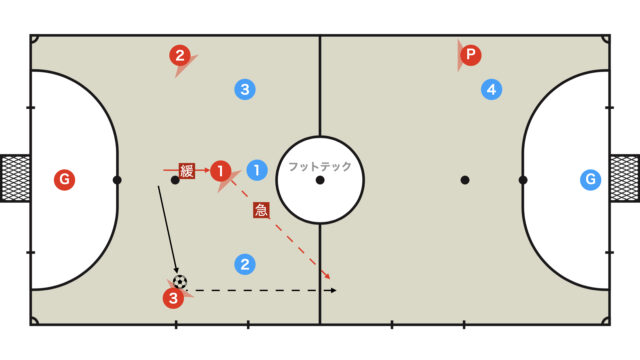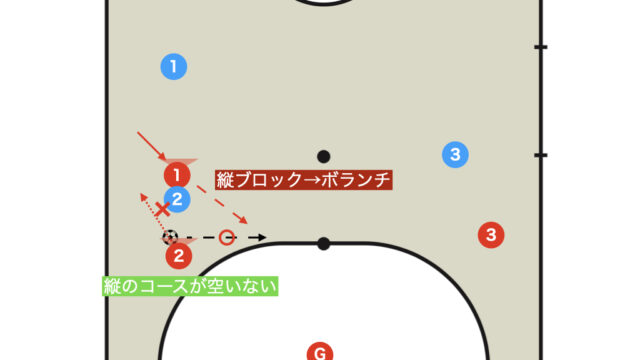Do you have the following concerns?
- Not sure how to lose your marker after a pivot pass
- Don’t know how to move after a pivot pass
- Uncertain about how to interact with the pivot after a pivot pass
Many people can execute a pivot pass without much thought, but after that, they may stop moving or feel lost.
This time, we will thoroughly explain pivot passing and how to break free from a marker, using diagrams and videos.
We will also introduce specific training methods at the end, so be sure to read until the end.
Distance from the Marker Required for a Pivot Pass
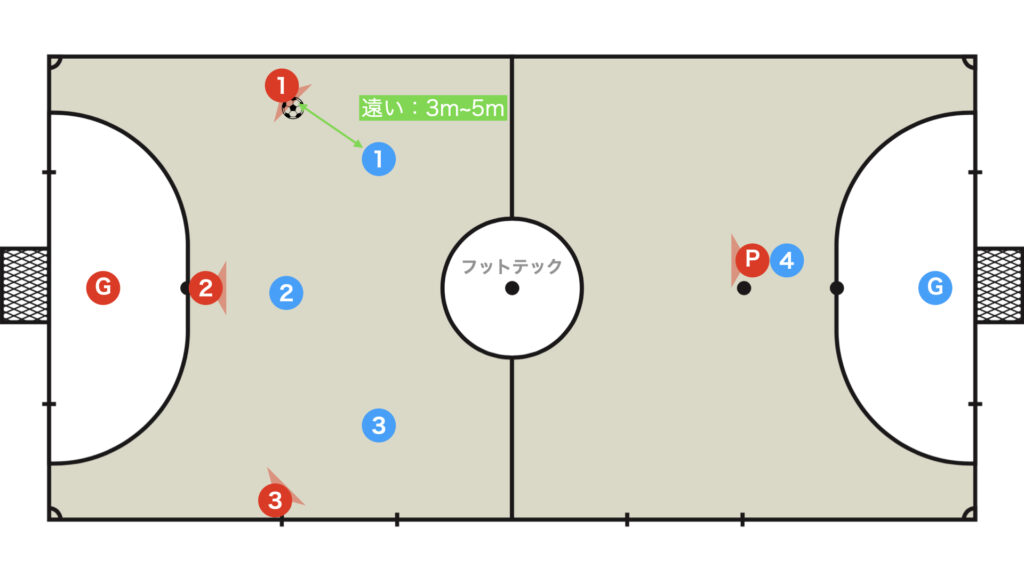
The farther the pivot pass is from the opponent’s marker, the more locations the pass can reach.
In numerical terms, if you are 3m to 5m or more away from your marker, you can pass to most locations. (This distance varies depending on the skill level of the passer.)
Types of Pivot Passes

Pivot passes can be broadly classified into two types: vertical and diagonal.
There are more detailed classifications, but for simplicity, we will use these two categories in this explanation.
Breaking Free from a Marker After a Pivot Pass
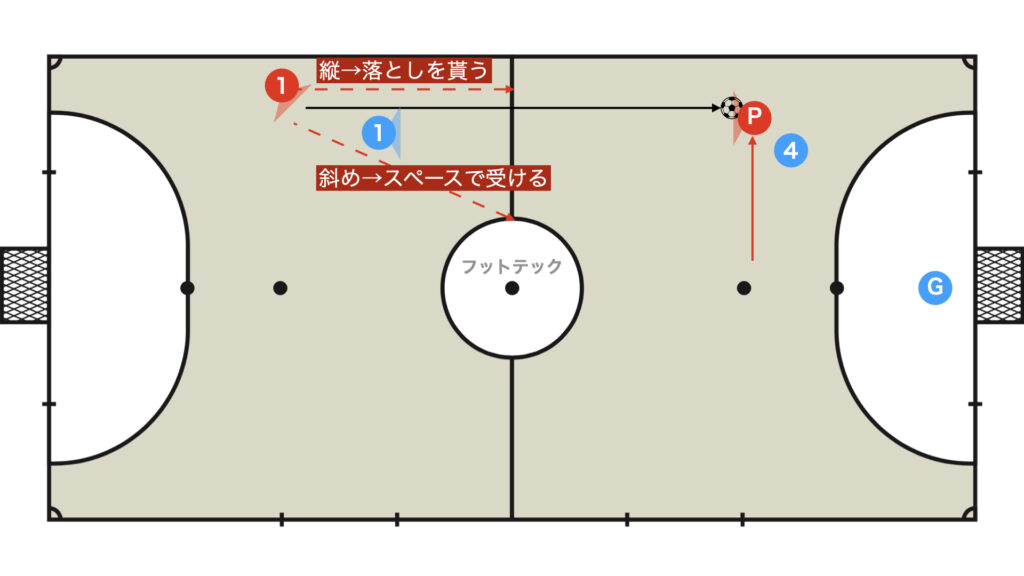
After a pivot pass, the passer has two main options for maneuvering:
- Move vertically and receive a return pass
- Move diagonally to receive in open space
Ultimately, these two patterns will be the basis of decision-making against the opponent’s defense.
Specific Offensive Tactics
Utilizing Space
Vertical One-Two

A combination play where a player breaks diagonally and receives a pivot pass is called a vertical one-two.
Vertical Turn & Segundo
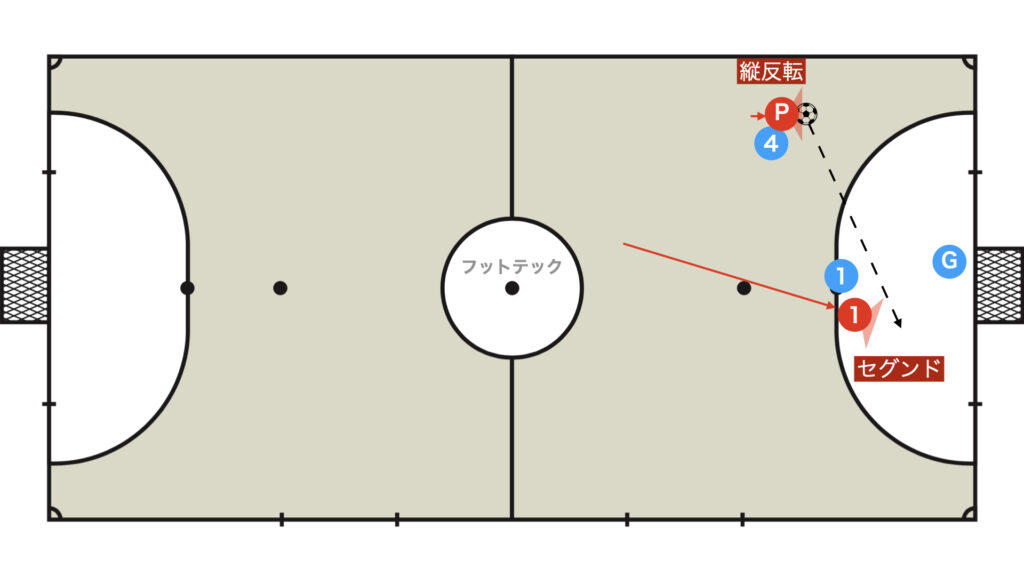
If the vertical one-two is not possible, execute a vertical turn.
The player who attempted to receive in space will become the segundo (secondary option).
Attacking in the Opponent’s Half
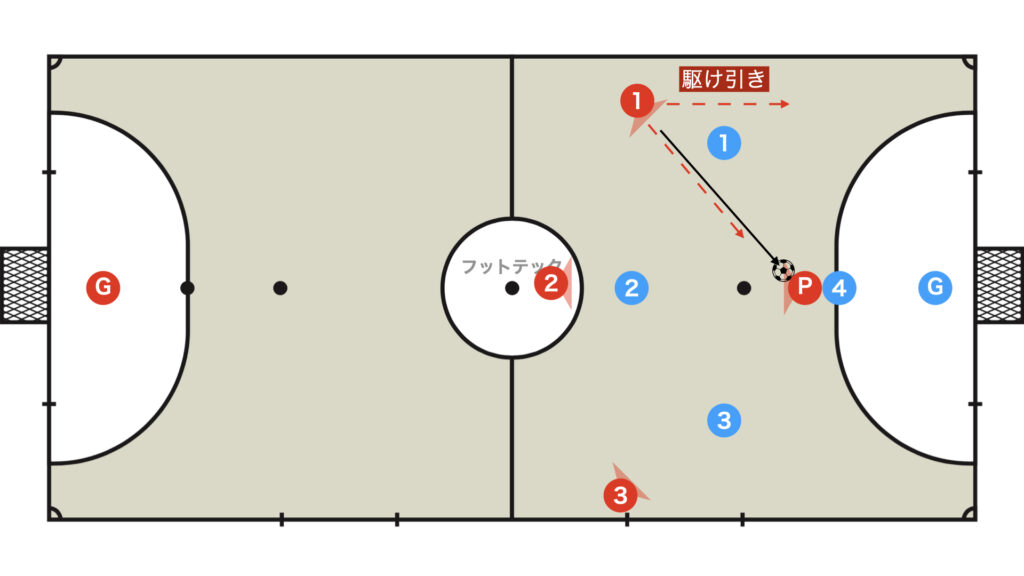
In tactics that utilize the pivot, such as 3-1 or 2-2 formations, pivot passing and breaking free from markers are highly effective ways to finish attacks.
Training Methods
To create more pivot play situations, training often involves scenarios where the pivot is left unmarked.
Here are some representative training drills:
- 1vs1 + Pivot
- 2vs2 + Pivot
- 3vs3 + Pivot
The University of Tokyo Futsal Team has posted some easy-to-understand videos, so be sure to check them out.
1vs1 + Pivot
2vs2 + 2 (Pivot)
- The pivot can move only near the corner kick area and is limited to two touches.
- Shots must be taken within two touches after receiving a pass from the pivot.
- Players switch roles after scoring.
Thank you very much for reading this article to the end.
If you found this article useful, please consider sharing it using the social media share buttons above.
We regularly share valuable insights on futsal tactics on Twitter, so if you haven’t followed us yet, we’d appreciate your support!
We are committed to raising the level of futsal in Japan by sharing high-quality information through discussions with individuals who have coaching experience in the F.League and overseas.
If you have any questions or notice any mistakes, feel free to leave a comment below.
We update our articles regularly, so if you’d like to keep reading, please bookmark our site or search for “FutTech”!

